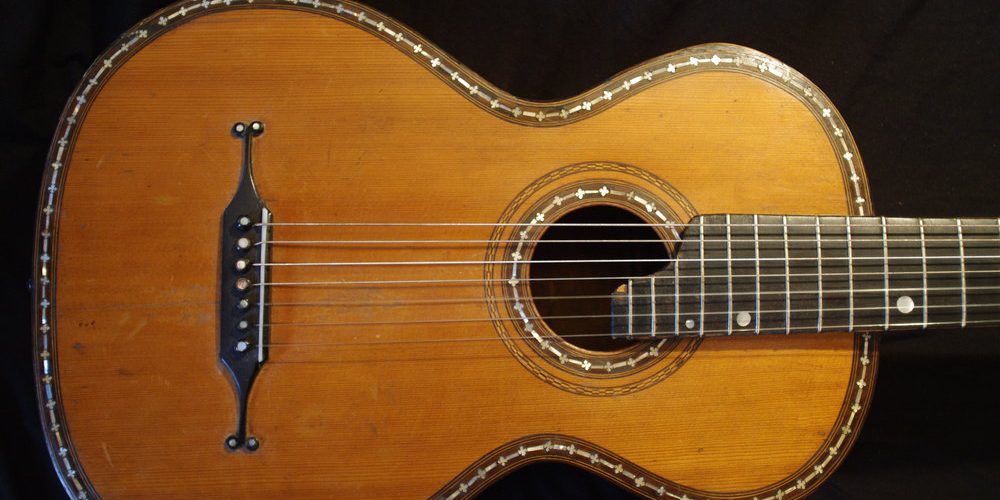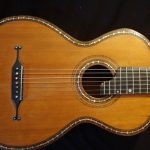PaR: The Russian guitar (sometimes referred to as a “Gypsy guitar”) is an acoustic seven-string guitar that was developed in Russia toward the end of the 18th century: it shares most of its organological features with the Spanish guitar, although some historians insist on English guitar ascendancy. If you ever thought that ‘Spanish’ guitar is just… ‘Spanish’, listen again.
It is known in Russian as the semistrunnaya gitara (семиструнная гитара), or affectionately as the semistrunka (семиструнка), which translates to “seven-stringer”.
These guitars are most commonly tuned to an open G chord as follows: D2 G2 B2 D3 G3 B3 D4. In classical literature, the lowest string (D) occasionally is tuned down to the C.
- https://en.wikipedia.org/wiki/Russian_guitar
- https://www.thomann.de/gb/thomann_classica_fusion_7_string.htm
Traditionally, Russian and Spanish guitars are tuned differently. On the Spanish guitar the open-string chord is an Em11, while on the Russian guitar it is a G-major. While the Spanish guitar is tuned in fourths with one (major) third (G3–B3), the Russian guitar is tuned in thirds (G2–B2, B2–D3, G3–B3, and B3–D3) with two fourths (D2–G2, and D3–G3):
D2 G2 B2 D3 G3 B3 D4
Six string adaptations
A common practice for six string guitar players of Russian romances and bard music is to retune their guitars using variations of the seven string tuning, such as:
- G2 B2 D3 G3 B3 D4 (no bass D string, also known as “dobro open G”)
- D2 B2 D3 G3 B4 D4 (no low G)
- D2 G2 D3 G3 B3 D4 (no low B, the standard six-string open G tuning used by bard Alexander Rozenbaum)
- D2 G2 B2 G3 B3 D4 (no middle D, used by Bulat Okudzhava in his latter years when he adopted a six string




